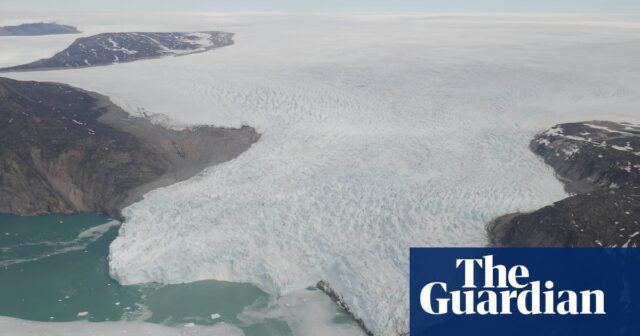The Greenland ice sheet – the second largest body of ice in the world – is cracking more rapidly than ever before as a response to climate breakdown, a study has found.
Researchers used 8,000 three-dimensional surface maps from high-resolution commercial satellite imagery to assess the evolution of cracks in the surface of the ice sheet between 2016 and 2021.
They found that the crevasses – the wedge-shaped tears that open in glaciers – had significantly increased in size and depth over the five years and at a faster rate than previously detected.
“The biggest thing I was surprised about was how fast this was happening. One previous study showed changes over the scale of decades … and now we’re showing this happening on scales of five years,” said Dr Tom Chudley, an assistant geography professor at Durham University and lead author of the study.
Since 1992, Greenland has experienced about 14mm of sea level rise. According to scientists, this is due to the increased melting of ice in response to hotter weather, and the increased flow of ice in the ocean as a response to hotter ocean temperatures, both driven by climate breakdown.
“We are confident that crevasses opening are related to the speed-up of the ice sheet. We’ve known for a number of years now that the ice sheet’s been accelerating quite significantly since 1990, and broadly we understand this to be related to ocean warming,” said Chudley.
He hopes the high resolution mapping used in the study will begin to feed into other research in order to better project sea level rise.
“Several of our large-scale models struggle to account for a lot of what we call dynamic instabilities,” he said. “These are things related to the glacier moving and getting faster … dynamic instabilities are causing potentially up to a metre of sea level rise by 2100, and 10 metres of sea level rise by 2300.
“So, we desperately need to be better able to project sea level rise, because we need to be able to plan, to mitigate and adapt to sea level rise over the next three centuries.”






